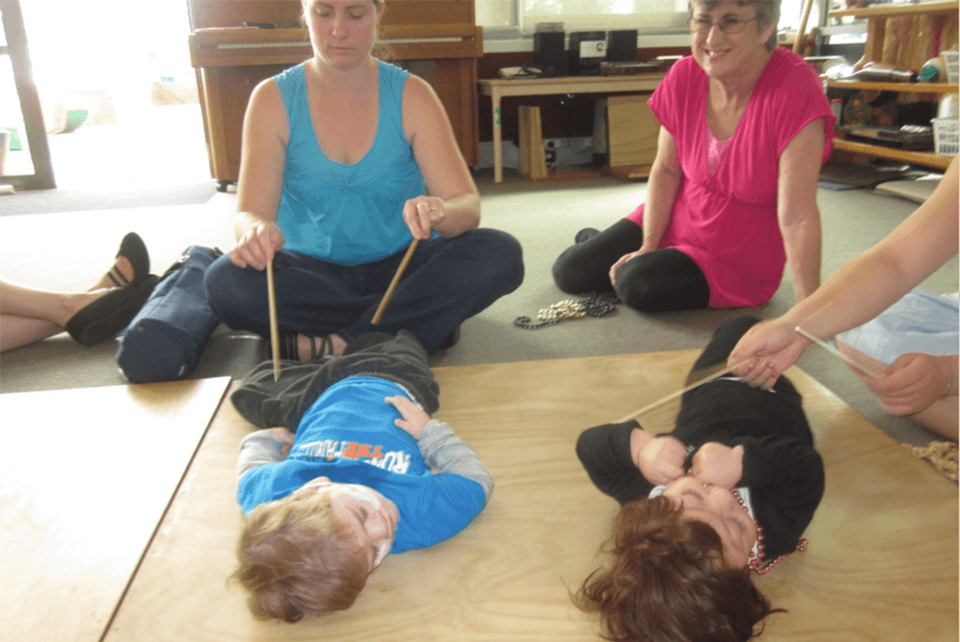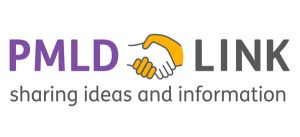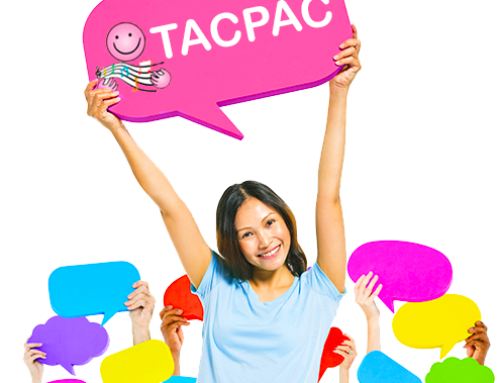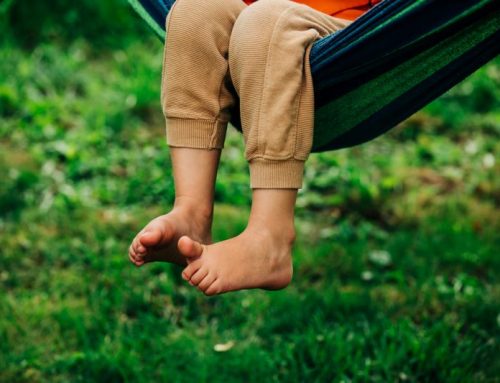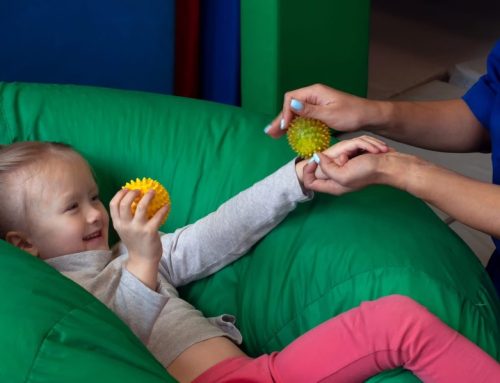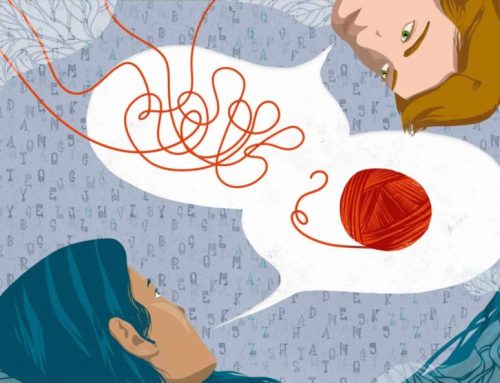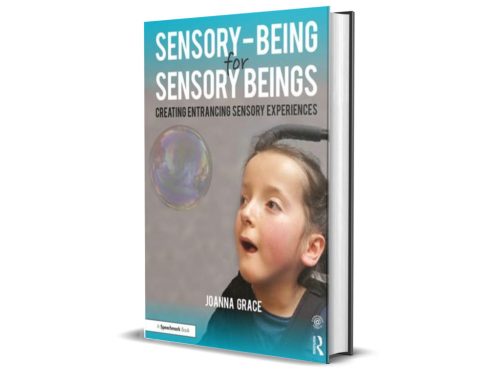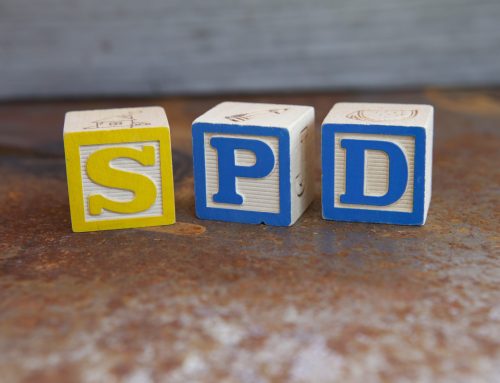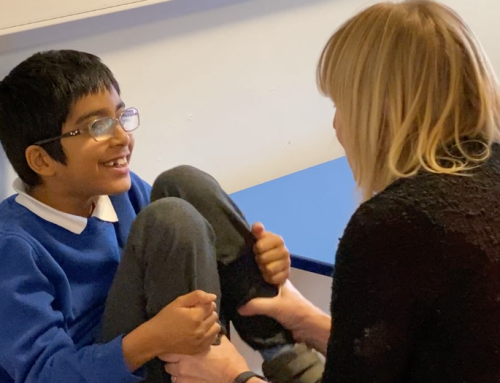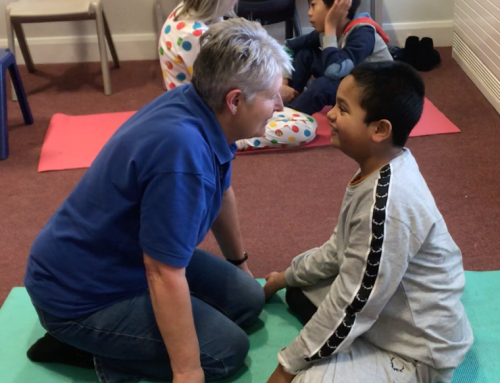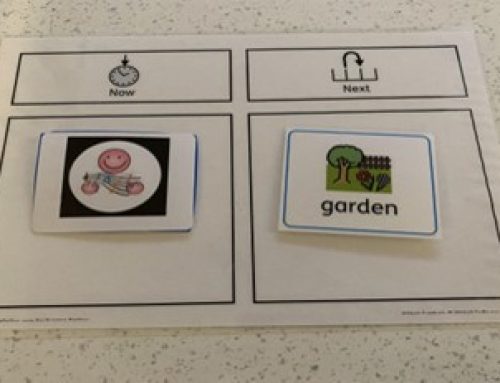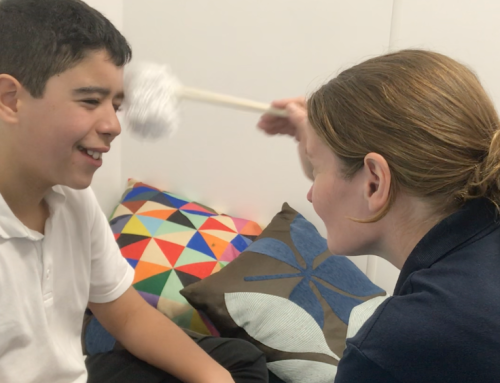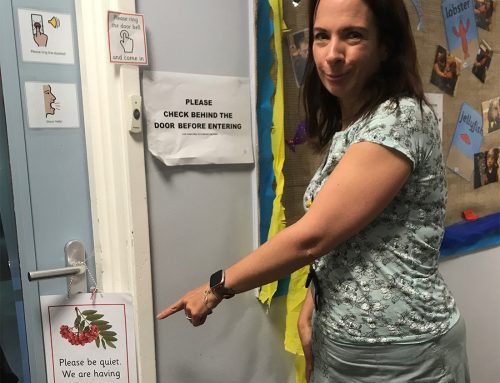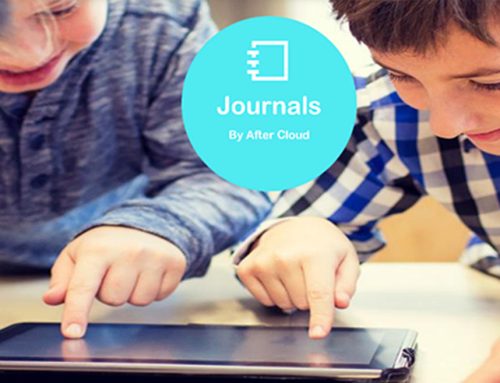Good vibrations: how to use resonance boards
In a recent edition (see below) of the PMLD LINK Journal, teacher Sarah Parkes wrote about using resonance boards in her Early Years classroom.
In the article, she describes resonance boards as “a simple piece of equipment which yields many benefits, as well as providing great enjoyment to pupils”. The boards offer a whole-body experience, providing sensory feedback to every sound or movement, to which children in turn feel encouraged to respond.
Resonance boards are therefore a fantastic way to engage children who have PMLD.
But what is a resonance board?
A resonance board is a large sheet of very thin plywood, raised slightly off the ground by another thin strip of wood. This allows the board to vibrate at the slightest movement or sound, just like a huge drum.
Using a resonance board with TACPAC
As many of you will know, TACPAC centres around the use of the basic beat. The basic beat of the music is what makes the receiver feel safe and held, encouraging them to relax and to feel safe. promoting sensory alignment. A resonance board is perfect for amplifying the basic beat.
Whether you’re holding an individual or a group session, the first thing you need to do is to make sure your receivers have contact with the board. For very small children, the adult givers can sit around the outside of the board with the children on their laps, and the children’s bare feet touching the board. Otherwise you can position foam rubber wedges around the outside to prop children up with their hands or feet touching the board. Bigger children can sit fully on the board – you can fit about three 9-year-olds on a 6×4-foot board!
Place a speaker on the resonance board, turn up the bass and then play TACPAC using the TACPAC app on your device. Not only will the receiver be able to hear the beat, but they will also feel it through the board’s vibrations.
Resonance boards are especially good for receivers who are hearing- or visually-impaired, but they provide all receivers with a wonderful physical experience that encourages them to relax, and to explore ways to engage with the world around them, all the while feeling held and soothed by the basic beat.
PMLD LINK is a charity that was set up to make a difference to the lives of those with profound and multiple learning disabilities (PMLD). You can support their work or subscribe to the journal on the PMLD LINK website at https://www.pmldlink.org.uk/. Sarah Parkes’ article appeared in the Spring 2022 edition (Vol. 34, No.1, Issue 101, p.27-30).
Share your story!
Do you have experience of using Tacpac with a resonance board? How do you use it with your receivers?
Email us to share your ideas, stories, photos and videos on info@tacpac.co.uk


